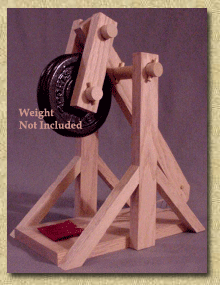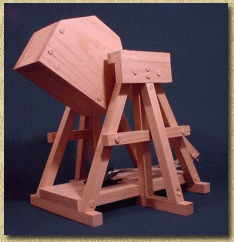|
|
What is Six Sigma ?
An Explanation of Six Sigma Goals and Processes
Developed and championed by Motorola engineers in the
1980's, Six Sigma is an attempt to increase traditional quality levels
from measuring defects per thousands to measuring defects per millions.
Six Sigma methodology addresses variability in design, production, services,
processes and measurement. Decreasing a process's variability increases
control and predictability of the process, resulting in increased quality,
reliability and performance, while reducing cost. There are four main sources
of process variation:
-
Poor design resulting from bad design practices, unrealistic or
unclear requirements and requirement shift and creep
-
Variation in a manufacturing process due to varying manpower levels,
work methods and ethics, environmental factors, training and machine wear
-
Variation in measurement systems due to improper calibration and
implementation
-
Variation in parts and supplies from venders and subcontractors
The name Six Sigma refers to the six standard deviations in process's normal
distribution. Like groupings on target, Six Sigma's goal is a process centered
within a specification and having very little variation, as shown in Figure
1.

|

|
|
Scattered
|
Centered with High Variation
|

|

|
|
Off-Center with Low Variation
|
Centered with Low Variation
|
-
Figure 1. - Process Distributions
As a team project, Six Sigma has five phases:
-
Design - In the Design Phase, the team identifies the problem and
project scope.
-
Measurement - In the Measurement Phase, the team identifies critical
characteristics, maps the value stream and validates a measurement system.
-
Analysis - In the Analysis Phase, the team determines the current
process capability and causal relationships in the process and identifies
variability.
-
Improvement - In the Improvement Phase, the team conducts experiments
, identifies variable relationships and takes corrective action.
-
Control - In the Control Phase, the team monitors performance, determines
the new process's capability and analyzes the process to identify and eliminate
potential mistake activities.
This Six Sigma process is commonly referred to by its acronym
DMAIC.
| Statistical
Catapult Plans
|

Plan # CP1 |
 Payment Information
Payment Information |
|
U.S. Orders Only |
$12.95
Free Shipping |
|

Build a Statistical Catapult in just one night with TrebuchetStore.com
catapult plans and instructions.
Great Project
The Statistical Catapult provides a valuable, cost-effective addition
to your classroom or corporate training program. It works wonderfully for
class assignments, teambuilding exercises and science fair projects.
Professional Design
Professionally engineered, the Statistical Catapult allows you control
of up to four independent variables for a wide range of educational and
experimental applications in business, mathematics, science and engineering
including:
-
Causal Relationships
-
Statistics
-
Parameter Control
-
Taguchi methods
-
Six Sigma
-
LEAN Manufacturing
-
Quality Control
-
Manufacturing Design
|
-
Process Control and Improvement
-
Product Design and Development
-
Problem Recognition and Solving
-
Data Collection and Graphing
-
System Modeling and Simulation
-
Ballistics and Projectile Motion
-
Science and Math Projects
-
Design of Experiments
|
Easy to Build
All TrebuchetStore.com plans use common, inexpensive and easy to find
building materials, available at your local hardware store or home center.
Basic skills and tools are required, but the straightforward designs require
no complicated layout or joinery.
TrebuchetStore.com plans come complete with:
-
Parts Shopping List
-
Measured Drawings for all parts
-
Assembly Drawings
-
Step by step Assembly Instructions
-
Step by step Firing and Tuning Instructions
All the information you need to complete your project quickly and easily.
TrebuchetStore.com Plans and Instructions take the mystery out of catapult
design and construction.
Please click on the image below for a larger Statistical
Catapult view.

|
Save up to 50% with Multi-Plan Deals
|
| 2 Plans $19.95 FREE Shipping
- Save Over 30%
U.S. Orders Only |
|
| Do It Yourself Working Model Trebuchet Kit |

|
 Trebuchet
Kit
Trebuchet
Kit
Item
#TK
|
$75.00
Free
Shipping
U.S. Orders Only |

|
The trebuchet kit includes fully precut and drilled
frame parts, pins and axles, sling cord and sewn pouch, projectiles and
fully illustrated assembly and firing instructions.
Unlike the flimsy, snap together plywood trebuchet
kits, this all hardwood trebuchet kit does not require additional cutting,
trimming or shaping.
This DIY Trebuchet Kit requires only white carpenter's
glue and a few bar clamps (not included) to assemble.
Read
More > |
| Fully Assembled Working Model Trebuchet |

|

daVinci Trebuchet
Item # T4
|
$299.00
Free
Shipping
U.S. Orders Only
|

|
Inspired by the great war machines and siege catapults of Leonardo da Vinci
, this all Red Oak
hardwood trebuchet features
an open counterweight cabinet for range and trajectory adjustment.
Fire with an empty counterweight for indoor use, or add weight (nuts,
bolts, scrap lead, iron or steel, sand, or small rocks not included)
for increased range.
Individually crafted from cabinet-grade red oak, the da Vinci Trebuchet
stands 14 inches tall in the cocked position, 24 inches tall in the fired
position and will hurl a projectile up to 60 feet. Includes six projectiles
and fully illustrated instructions.
Read More > |
What is Six Sigma ? An Explanation of Six Sigma Goals
and Processes |